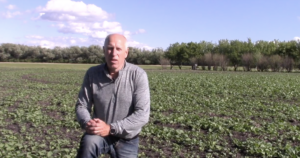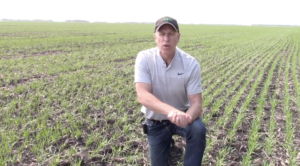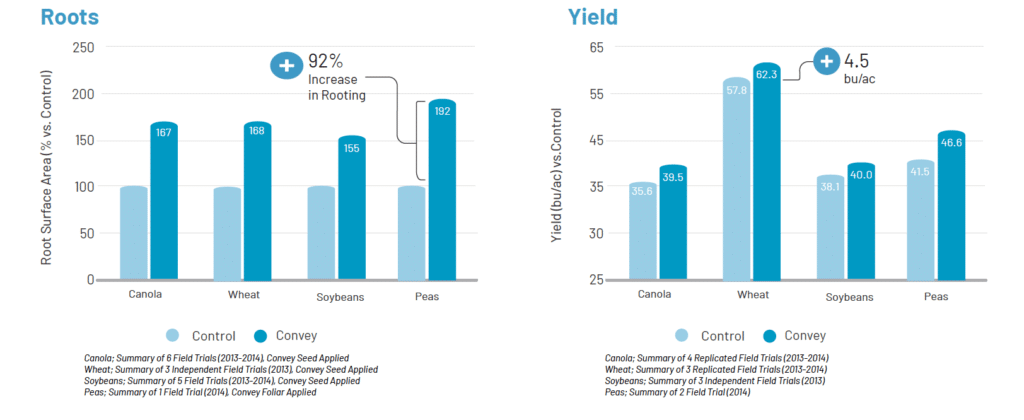Convey
Timing:
Foliar, Seed, SoilFormulation:
Liquid
Why use a Carbon Source Biostimulant?
Biostimulants were first commercialized in the 1950’s when seaweeds extracts started showing a “hormonal” response to the plant. Over the next 2 decades protein hydrolysates and humic acids were commercialized, but we only knew what these products did to the plant and NOT how they worked.
In the last 20 years, with the advancements in analytics, extraction techniques, and RNA sequencing we are now able to determine the key compounds and how they work within the plant.
The Carbon Source family was originally referred to as Humic acids. With advancements, the family now includes fulvic acid, and PPA (polymeric polyhydroxy acid) that contain compounds such as polyphenols, tannins, lignins, humin and lipids.
Related Articles

How Biostimulants Help with Early Season Cold and Moisture Stress
This spring, many growers are choosing to use a biostimulant to enhance nutrient uptake, nutrient use efficiency, tolerance to environmental stress, and/or enhance crop quality.

Are your crops stressed?
Chances are your crops have been through some stressful conditions this spring – lack of moisture, excess moisture, cold temperatures, hot temperatures – it’s been

Stress, stress, and more stress – How biostimulants can help
“A biostimulant without nutrition is like having a turbo engine in your truck but you are out of gas.” The season has just begun and
Why Convey?
Convey Technology, exclusive to ATP, is a patented technology that works in the plant to drive respiration. Increased respiration helps to drive rooting, improve nutrient use efficiency and alleviate stress.
- Increases rooting.
- Increases respiration and metabolism.
- Superior uptake of applied nutrients.
- Increases yield and backed by over 1,100 independent replicated trials.
- Can be applied to a wide range of crops.
- Compatible and complimentary to a wide range of nutrients.
- Convey is formulated into key ATP products, including PreCede, ReLeaf, and Impel.
Proven Yield Performance in Corn

- In 101 Studies across the US corn belt, Convey was applied with starter fertilizer at 7 fl oz/ac
- The yield increase from Convey was 8.1 bu/ac, with the check averaging 181 bu/ac.
- There was an 87.1% win rate with the addition of Convey to a starter fertilizer.
Proven Agronomic Performance

- WinRhizo results from 15 field trails conducted in 2013 to 2014 report Convey enhanced the root architecture among crops, showing as much as a 92% increase in the root surface area in Peas, when foliar-applied.
- Root analysis collected from 3 years of field trials show that in addition to increasing the root surface area, a 70% increase in the number of nodules was observed in Convey treated soybean plants.
- Data from 11 field trials between 2013 and 2014 show a consistent increase in yield in Canola, Wheat, Soybeans and Peas. The addition of Convey enhanced productivity by 4.5 bu/ac and 5.1 bu/ac in Soybeans and Peas, respectively.
Check Wheat (left) vs. Convey Treated Wheat (rght)
Check Corn (left) vs. Convey on Corn (right)
No Convey Canola (left) vs. Convey on Canola (right)
Technical Info
| PRODUCT | ANALYSIS | RATE | TIMING | FORM | PRODUCT SIZE |
|---|---|---|---|---|---|
| PPA | 1.5 oz/100lbs | Seed | Liquid | Case (2x2.5 gallon), 250 gallon |
| PPA | 7.0 oz/ac | Soil | Liquid | Case (2x2.5 gallon, 250 gallon) |
| PPA | 3.5 oz/ac | Foliar | Liquid | Case (2x2.5 gallon, 250 gallon) |
| PPA + 5%Zn + Blocker | 2 qt/ac | Soil | Liquid | Case (2x2.5 gallon, 250 gallon) |
Product Recommendations:
For Application with Fertilizer:
- Apply Convey at 7.0 fl oz/ac with your liquid in-furrow or starter fertilizers.
- Granular Fertilizers – Impregnate 1-4 qt of Convey onto each ton of dry fertilizer, depending on the final rate of fertilizer application in the soil.
- Foliar Application – Apply 3.5 fl oz/ac of Convey with your fertilizers and pesticides.
For Application with Seed:
- To maintain uniform coverage on the seed, you may dilute with water.
- Allow for proper drying time to ensure optimum flowability.
- Do not treat directly into planter.
- If combined with a seed protectant, conduct a jar test.
- Once Convey is combined with a seed protection, the mix shoud be applied as soon as possible.
